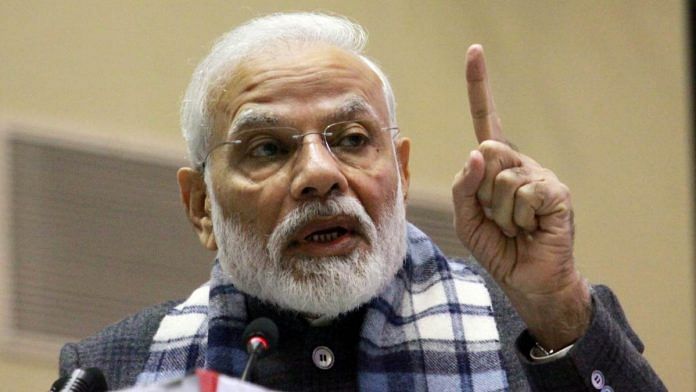Indian food, when done right, comes in a thali — a metal plate with half a dozen or more little bowls of vegetables, pickles, and so on. The word of the week in India is “thalinomics”: The government’s official survey of the Indian economy, published a few days ago, introduced the word to talk about how food was getting cheaper for people across the country. But it is now being used to talk about the government’s entire approach to the Indian economy — a little bit of this, a little bit of that, all mixed up together till you are unsure what you’re eating.
What works for food doesn’t quite work when it comes to economic policy. Every year at the end of January the Indian finance minister presents the federal budget, which is not just a statement of revenue and expenditure but also a guide to policy-making in the coming year. Given the intensity of India’s slowdown — six successive quarters of slowing growth, taking it down from almost 8% to 4.5%, a six-year low — all that Indian investors and consumers really wanted from their government at this point was some clarity. What is its plan? How does it intend to reverse the slowdown and raise India’s growth trajectory? By that standard, the only one that matters, the government’s budget — presented on Saturday — was a failure. It tried to do too much, and ended up serving a mismatched platter of competing flavors.
Some people hoped that the government would junk its fiscal targets and spend its way out of trouble — a bad idea, as I have argued earlier, albeit one that might have temporarily increased business confidence. Others prayed it would stick to its deficit reduction targets, in order to restore credibility to its battered reputation. In the end, the budget took a middle course — it allowed a fiscal slippage of 0.5% of GDP, to 3.5%. Not enough to be considered a real stimulus, but not quite enough to save ratings agencies from tut-tutting either. The finance minister claimed to be cutting middle-class taxes, but most taxpayers are unlikely to benefit from the budget’s changes. And the stock market — which fell 2.4% after the budget was presented — was dismayed that a tax on long-term capital gains stayed in place.
The government was similarly confused about trade. One section of the finance minister’s speech insisted that India must become part of the global value chains that are shifting slowly away from mainland China; but another, larger section was devoted to the sort of protectionist rhetoric we last heard in the socialist, isolationist 1970s. Tariffs were raised on a slew of products to protect Indian manufacturing. India continues to close itself off to trade when it should be opening up.
Narendra Modi, India’s prime minister, likes to be seen as an economic reformer but his government’s instincts have revealed themselves as anything but reformist. What’s now clear is that it doesn’t have a coherent agenda, either. Moreover, Modi’s government has spent so much time talking up its own achievements that, when faced with a crisis, it can’t afford to acknowledge its mistakes and take any real corrective action.
The question for Indian investors now is: What could force the government to focus on the economy? The slowdown wasn’t enough. Voters seem to care more about social issues. Big business is so scared of the Indian state that it never speaks up. Buried in the budget numbers is one answer to investors’ questions about what will make the government move, albeit one that will dismay a lot of people: the bond market, and ratings agencies.
Given that the government is living beyond its means, and it has already stretched the amount it can take out of the equity market — $30 billion of public sector stock is due to go on sale in the coming year — it is forced to turn to the bond market. It’s promised some government securities will be designed for foreign investors, and officials have publicly hoped that some will be included in global indices in 2020.
This is a pretty good idea. There’s no reason why Indians’ limited household savings should be the only ones raided by the government to fund its spending. Indian bureaucrats have always been sniffy about foreign capital, but they can no longer afford to put on airs. Yet depending on foreign capital to finance the deficit isn’t going be straightforward if the government keeps overspending. Moody’s Investors Service pointed out that “India’s general government debt is already significantly higher than the average for Baa-rated sovereigns”; the agency had shifted its outlook to negative late last year. So good news of a sort, I suppose: In deciding to depend upon global pools of capital, India’s government will be forced to listen to at least one group of people who care about growth and investment. It’s up to the bond markets now to do what nobody else has: Get Modi focused on the economy.- Bloomberg
Also read: How Economic Survey used ‘Thalinomics’ to defend Modi govt’s inflation management




I think, Modi and his advisors should avoid using simplistic analogies. Modi’s statement about making Pakora also being a vocation is still being mocked at after two years. Contrary to the assertion in Economic Survey, I can tell that food inflation has not come down.
All PM wanted was for the congress and the parliament to know the GDP growth rate was the highest in the year of demonetization. That ridicule still hurts him and he wats the record to show he was great. Sadly, it ain9’t so.